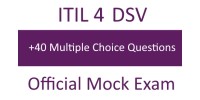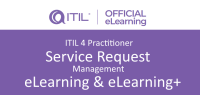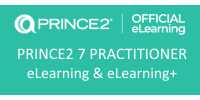Bridging the Best of Both Worlds: TOGAF and PRINCE2
In today's complex business environment, the integration of frameworks like TOGAF's Architecture Development Method (ADM) and PRINCE2's process-based approach for project management is not just beneficial; it's a strategic necessity. Let's dive into how these two powerful frameworks can be seamlessly integrated, using a relatable example to elucidate the concept.
Understanding the Core Frameworks:
- TOGAF's ADM provides a structured approach for organizations in planning and implementing enterprise architecture. It is renowned for its flexibility, allowing customization to meet an organization’s specific needs.
- PRINCE2 (Projects In Controlled Environments), on the other hand, is a process-based method for effective project management. It's recognized for its principles, themes, and processes that guide teams in executing projects efficiently.
Architecture Project is not a term defined in the TOGAF Standard; however, it is used often for a project undertaken to define and describe an Enterprise Architecture to be implemented. Therefore, in this Guide, the term “Architecture Project” encompasses all activities undertaken within Phases A to F, and Requirements Management.
A key result of Phases A to F is an Architecture Definition Document, which describes the Enterprise Architecture to be implemented in Phase G and maintained in Phase H. Therefore, at the end of Phase F the Enterprise Architecture to be implemented is defined and described – and the Architecture Project, by our definition, is completed.
The Preliminary Phase, Phase G, and Phase H are out of scope for the Architecture Project. The Preliminary Phase is concerned with ensuring an Enterprise Architecture capability of the organization. The goal of Phase G is to govern implementation of the Enterprise Architecture. Typically, it is run as a separate endeavor (a project or a set of projects). The goal of Phase H is to maintain the Enterprise Architecture implemented – it is related to operational business (or process) rather than project management.
Integrating these methodologies leverages the strategic planning strength of ADM with the robust project execution framework of PRINCE2.
A Simplified Example: Implementing a New IT System
Imagine your organization plans to implement a new IT system. Here's how TOGAF's ADM can be integrated with PRINCE2 processes to achieve a smooth, structured implementation:
|
Architecture Project Lifecycle |
TOGAF ADM Phases | PRINCE2 7 Processes |
| Architecture Project start-up | Phase A (Architecture Vision) – Establish an Architecture Project step | Starting up a Project – all steps |
| Architecture Project planning | Phase A (Architecture Vision) – Develop a Statement of Architecture Work step and previous steps | Initiating a Project – Create the Project Plan, Assemble the Project Initiation Documentation |
| Planning a stage | No direct mapping, but can be thought of as a closing step of the preceding phase | Managing Stage Boundaries - Plan the Next Stage |
| Execute, monitor, and control a stage | Each of the Phases B to F |
Controlling a Stage - Authorising work to be done, Gathering progress information about that work, Watching for changes, Reviewing the situation Managing Product Delivery - Ensuring that the work is done; Assessing work progress and forecasts regularly |
| Ending a stage | No direct mapping, but can be thought of as a closing step of the preceding phase | Managing Stage Boundaries - Provide the Project Board with information needed to approve the current stage's completion and authorise the start of the next stage |
| Architecture hand-over | Phase F (Migration Planning) – closing steps | Closing a Project – hand over products |
Key Takeaways:
- Integrating TOGAF’s ADM with PRINCE2 processes allows for a comprehensive, structured approach to project and architecture management.
- This synergy ensures that while the project is effectively managed through PRINCE2, TOGAF’s ADM guarantees that the project aligns with the enterprise architecture, enhancing strategic coherence.
By harnessing the strengths of both TOGAF and PRINCE2, organizations can achieve greater efficiency, coherence in strategy and execution, and ultimately, successful project outcomes.
Author: Claudio Restaino
Referenced Documents: TOGAF® Series Guide Architecture Project Management







